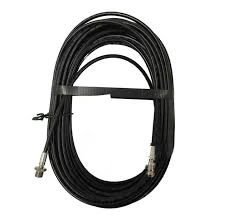slip coupling
Understanding Slip Couplings A Key Component in Mechanical Systems
Slip couplings are an essential component in various mechanical systems, playing a pivotal role in controlling movements, reducing wear, and preventing damage during operation. This article delves into the concept of slip couplings, their functionalities, and their applications, highlighting why they are significant in today's machinery.
A slip coupling is designed to transmit torque while allowing for a degree of relative movement between two connected shafts. This capability to 'slip' is crucial in situations where overloading might occur, enabling the coupling to prevent excessive stress on the connected components. By accommodating misalignments and absorbing shock loads, slip couplings protect machines from potential damage, extending their lifespan and reducing the need for costly repairs.
The basic mechanism of a slip coupling typically involves a locking mechanism that engages when the torque is within acceptable limits. If the torque exceeds a predetermined threshold—perhaps due to a sudden increase in load or malfunction—the locking mechanism disengages, allowing the couplings to slip. This slipping action can prevent catastrophic failure of critical components like gears, motors, and engines.
Slip couplings come in various designs, including shear pin types and friction-based models. Shear pin couplings rely on a pin that can break under excessive torque, thereby disengaging the connection and preventing further damage. In contrast, friction-based slip couplings utilize friction materials to provide a controlled slip, which can be adjusted according to the specific operational requirements. Each type of slip coupling has its advantages, and the choice depends on factors like application, torque ratings, and environmental conditions.
slip coupling

One of the most significant advantages of slip couplings is their ability to handle misalignment. In mechanical systems, even slight misalignments can lead to increased wear and tear on components. Slip couplings can accommodate both angular and parallel misalignments, ensuring smoother operation and reducing downtime. For industries where precision is vital, such as robotics and manufacturing, the ability to compensate for misalignment is invaluable.
In addition to protecting machinery, slip couplings also play a vital role in safety. High-torque applications, particularly in industrial environments, pose risks not only to machines but also to operators. By allowing for controlled disengagement during overload conditions, slip couplings help prevent dangerous situations, minimizing the risk of injuries and accidents in the workplace.
Moreover, the automotive sector benefits immensely from slip couplings. They are commonly employed in drive systems to manage torque distribution between different components, facilitating smooth transitions and enhancing overall performance. In electric vehicles, for example, slip couplings can enhance the efficiency of power delivery systems, thereby contributing to energy savings and improved performance.
Overall, slip couplings are an integral part of modern mechanical engineering. Their ability to provide flexibility, enhance safety, and prolong the life of machinery makes them indispensable across various industries, from manufacturing to automotive and beyond. As technology continues to evolve, the design and application of slip couplings are expected to advance, with innovations that further improve their efficiency and effectiveness. Understanding the mechanics of slip couplings will be crucial for engineers and technicians tasked with ensuring optimal performance and reliability in the equipment they manage.
Incorporating slip couplings into mechanical designs may very well be the difference between a robust, reliable system and one that is prone to failure. As industries continue to demand greater efficiency and performance, the role of slip couplings will undoubtedly grow, underpinning the seamless operation of various mechanical systems in an increasingly complex world.
-
Ultimate Spiral Protection for Hoses & CablesNewsJun.26,2025
-
The Ultimate Quick-Connect Solutions for Every NeedNewsJun.26,2025
-
SAE J1401 Brake Hose: Reliable Choice for Safe BrakingNewsJun.26,2025
-
Reliable J2064 A/C Hoses for Real-World Cooling NeedsNewsJun.26,2025
-
Heavy-Duty Sewer Jetting Hoses Built to LastNewsJun.26,2025
-
Fix Power Steering Tube Leaks Fast – Durable & Affordable SolutionNewsJun.26,2025

